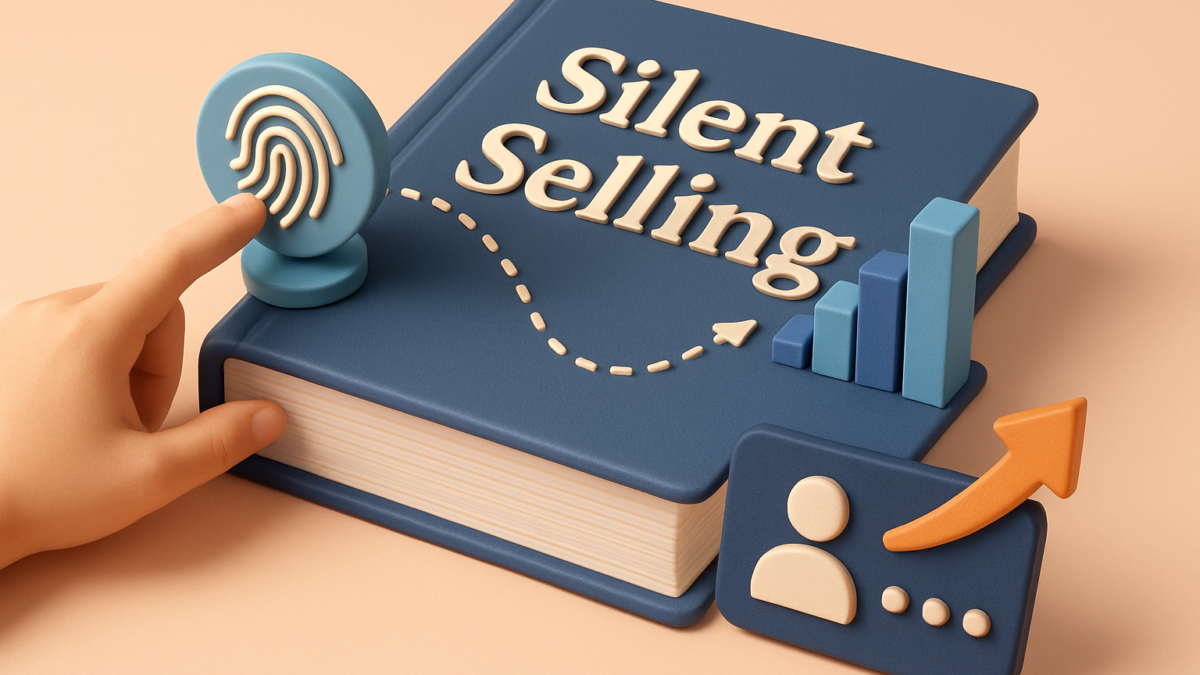Silent Selling: How Invisible Touchpoints Shape B2B Lead Quality
In B2B marketing, not every lead comes from a flashy ad campaign or a cold email. More often than not, prospects are silently influenced by a series of invisible touchpoints before they ever fill out a form or request a demo. This concept is known as silent selling—the subtle yet powerful ways businesses shape perceptions and influence buying decisions without direct sales interaction.
From website navigation and content design to social proof and brand reputation, silent selling is redefining B2B lead generation strategies in 2025.
What Is Silent Selling?
Silent selling refers to non-intrusive interactions that guide prospects toward a buying decision. Unlike outbound strategies that demand attention, silent selling creates a seamless, trust-driven experience that nurtures leads in the background.
Examples of Silent Selling in B2B:
- Website UX & Navigation – A clean, easy-to-navigate site encourages trust.
- Case Studies & Whitepapers – Quietly validate expertise without aggressive pitches.
- Customer Reviews & Testimonials – Peer validation builds credibility.
- Automated Nurture Sequences – Personalized follow-ups that feel natural.
- Thought Leadership Content – Blogs, podcasts, or webinars that educate without selling.
Why Silent Selling Matters for B2B Lead Quality
According to Gartner, 83% of B2B buying decisions happen before prospects ever talk to a salesperson. That means buyers are already forming opinions based on digital experiences and brand presence.
Silent selling is crucial because it:
- Builds trust before the first call – Prospects are more open to conversations.
- Filters low-quality leads – Only those genuinely interested engage further.
- Shortens sales cycles – Educated leads require fewer touchpoints to convert.
- Improves ROI on marketing – Every silent interaction works like a “micro-conversion.”
Step-by-Step Guide to Leveraging Silent Selling
Here’s how businesses can intentionally design invisible touchpoints that boost lead quality:
1. Optimize Your Website Experience
Your website is often the first silent salesperson. Ensure:
- Fast load times and mobile responsiveness
- Clear CTAs (book a demo, download a guide)
- Intuitive navigation with minimal clicks to key content
2. Create Trust-Building Content
Develop assets that educate, not sell:
- Case studies showcasing real ROI
- Industry-specific blogs with actionable insights
- Research-backed whitepapers that position authority
Example: A SaaS provider increased demo bookings by 40% after adding use-case case studies to their resource library.
3. Use Social Proof Strategically
Silent trust-builders include:
- Client logos on your homepage
- Verified customer testimonials
- Third-party reviews (e.g., G2, Trustpilot)
4. Nurture Leads with Automation
Smart automation ensures you stay top-of-mind:
- Trigger-based email sequences tailored to buyer stage
- Personalized recommendations based on content downloads
- Gentle reminders rather than pushy sales follow-ups
5. Strengthen Brand Presence
Silent selling thrives on consistent reputation:
- Publish thought leadership articles on LinkedIn
- Engage in industry conversations without direct selling
- Maintain brand consistency across all channels
Measuring the Impact of Silent Selling
Since silent selling is subtle, measuring its effectiveness requires tracking indirect metrics:
- Content engagement (time on page, downloads)
- Lead quality scores in CRM
- Conversion rate by source (e.g., case study downloads → demo requests)
- Sales feedback on lead preparedness
Pro Tip: Use attribution modeling to identify which silent touchpoints contribute most to conversion.
Real-World Example: HubSpot’s Silent Selling Strategy
HubSpot’s massive resource library (guides, templates, webinars) generates thousands of high-quality leads monthly. They don’t “sell” directly; instead, they empower users with valuable tools. By the time a lead contacts sales, they already view HubSpot as a trusted authority—this is silent selling at its finest.
Looking to improve your B2B lead quality? Check out our B2B Lead Generation Services for tailored strategies.
- External Reference: Gartner’s research on the B2B buying journey highlights how digital touchpoints dominate early decision-making.
Final Thoughts
In today’s competitive B2B market, the best sales pitch is often no pitch at all. Silent selling allows businesses to build credibility, nurture trust, and attract higher-quality leads—without overwhelming prospects.
By focusing on invisible touchpoints, you create a natural path where leads choose you, rather than being chased.
Call-to-Action
Are you ready to transform invisible interactions into measurable results?
Partner with our experts to design a silent selling strategy that boosts your B2B lead quality.
You May Also Like: What Is Whitepaper Lead Generation? A Complete Guide for 2025





